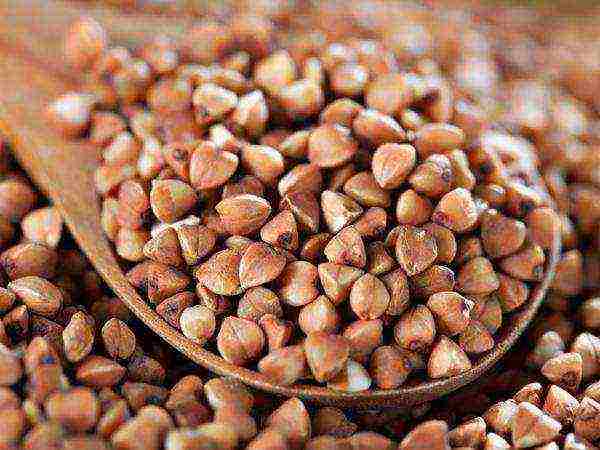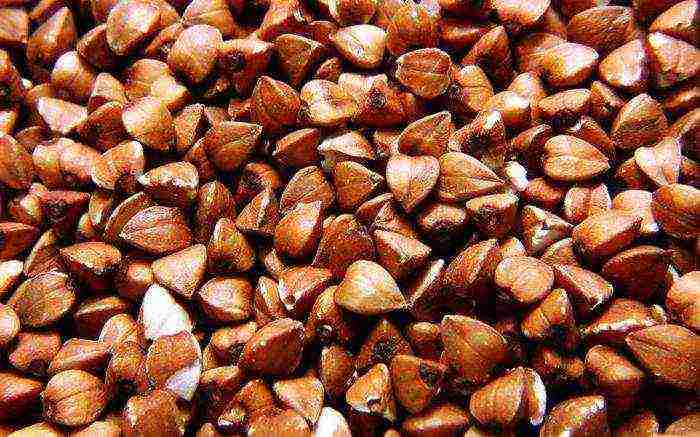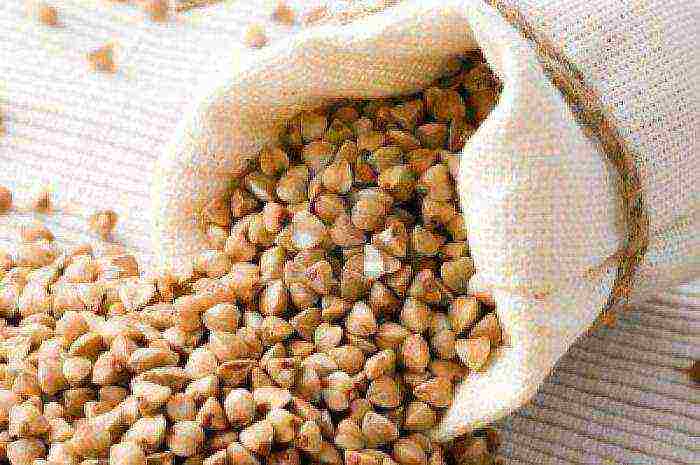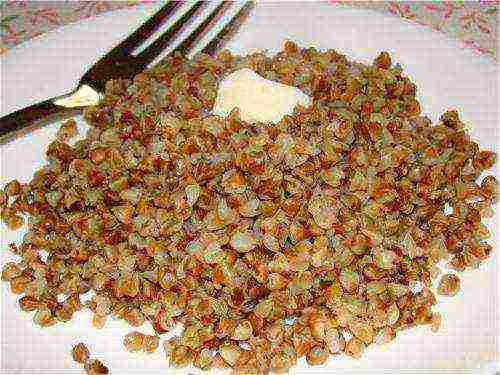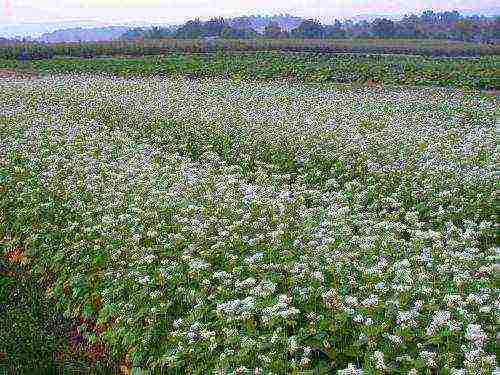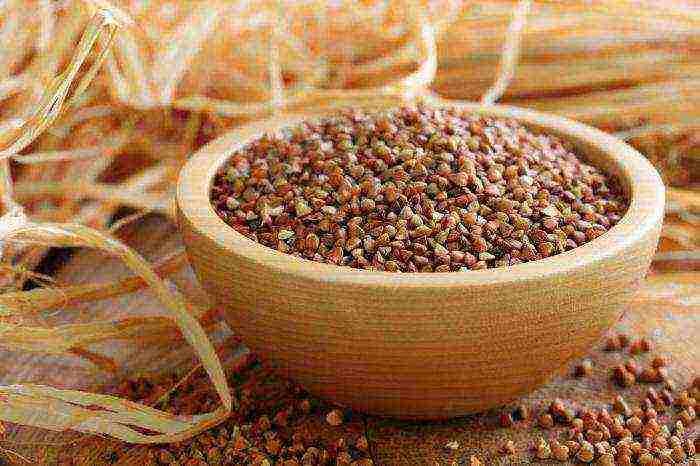Content [show]
Buckwheat is considered the number one cereal in Russia. Our country is the main consumer and producer of buckwheat groats. Since this cereal is unpretentious and not demanding on the quality of the soil, it is grown in Japan, Korea, in the countries of the Middle East and the Caucasus. In Europe, buckwheat has not gained popularity.
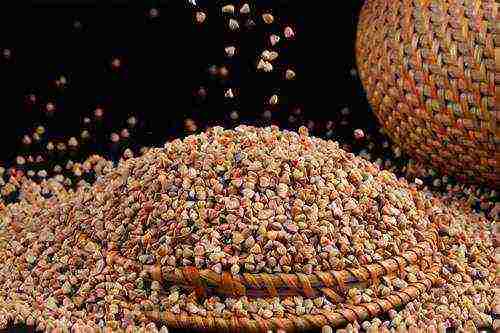
In some European countries, such as France, Italy, Spain, Germany, buckwheat cannot be found in regular grocery stores. You need to look for her in pharmacies, because she
considered a medicinal and dietary product ... In these countries they sell exclusively
"Green buckwheat" (any buckwheat in an unprocessed raw form has a green color). Buckwheat is also called
"The queen of groats"
, such a name fully justifies itself. She
surpasses all cereals by content
vitamin P,
it contains a huge amount
magnesium (Mg), B vitamins
(B1, B2, B3, B6, B8, B9). Buckwheat contains
vitamin E,
which is one of the most powerful antioxidants, useful organic acids (oxalic, citric and several others). It contains
polyunsaturated fatty acid Omega-3
.
This cereal is ideal for dietary and baby food. By the way, buckwheat cooked in a multicooker retains more of its useful properties, and is also very fragrant and tasty. You can read about how to choose a suitable multicooker on the website.To please yourself and loved ones with a delicious side dish, called
"buckwheat",
you need to be able to choose high-quality cereals.
Learning to choose the right buckwheat
So today we
we will learn to choose buckwheat ... First of all, when choosing buckwheat groats
you need to pay attention to the country of the manufacturer ... Chinese groats have a more intense dark brown color, but they are much inferior in quality to the Russian manufacturer, they are more moist and subject to spoilage faster. This cereal is brown in color because it is heat treated (fried). Such cereals contain fewer nutrients.
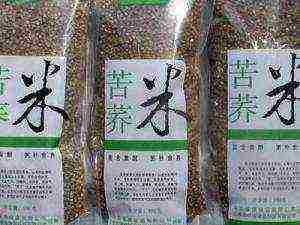
A must when choosing buckwheat
pay attention to whether the GOST standard is indicated on the packaging ... This is an important indicator of the quality of a product. Read on the package with cereals to which
grade
she refers. If it contains varieties of the type
"Extra",
or
"Higher",
it only says that the groats are of poor quality. According to the good old GOST, such varieties of buckwheat do not exist. Usually, the packaging with the names "Extra" and "Higher" hides cereals from Asian countries, or cereals with an expired shelf life.
It is not always possible to determine the freshness of the cereal through the packaging.
Musty or musty odor from the packaging is often not identifiable. Therefore, if at home, having opened the packaging, you find foreign smells, you should know that the cereals are spoiled, and
you have every right to return it to the store .
Buckwheat - types and varieties
Good buckwheat is divided into 2 types and 3 varieties.
Types of buckwheat
Core - whole grain, no hard shell.
Done - is divided into small and large, is split buckwheat grains. In the common people they call her
"Buckwheat"
.
This type of cereal is not divided into varieties. 
"Buckwheat" or large done
Buckwheat varieties
Core of the first grade contains a minimum of impurities in the form of small pebbles, unprocessed grains and litter.
Core of the second grade may contain from 5 to 7% litter and other types of grain in a pack.
Core of the third grade contains from 8 to 10% litter and foreign impurities. If you don't really want to waste time sorting out cereals,
choose kernel of the first grade .

The core of the first grade.
Also, when choosing buckwheat
pay attention to what kind of porridge you want to get ... So from the core, an excellent crumbly porridge is obtained, and from the done, an exceptionally viscous porridge is obtained.
Other types of buckwheat
Now in stores on the shelves you can find
quick-cooking porridge, fried and steamed ... This type of cereal, of course, will be cooked in a fairly small amount of time, but you will receive a minimum of benefits from it, since from the past processing of buckwheat
beneficial properties and vitamins are half volatilized ... To get the most out of the use of buckwheat, you should choose lighter buckwheat.
The lighter the buckwheat, the less processing it went through. Storage of cereals
Remember, that
shelf life of buckwheat does not exceed
20 months ... Therefore, when choosing, carefully study the date of production and packaging of the product. Never take cereals with a date stuck on their original packaging.
The date of production and packaging must always be stamped directly on the packaging of the goods!
After purchasing buckwheat groats in the store
it is not recommended to store it in its original packaging ... It is best to pour the cereals into a special glass or enamel jar for cereals and store it in a dry, cool, dark place under a tightly closed lid.
Buckwheat flour 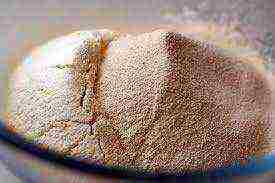
Many department stores and shops offer
buckwheat flour. Pancakes, flat cakes and pancakes are very tasty from buckwheat flour. But, due to the insufficient content of gluten in buckwheat, it is not suitable for baking bread, pies and other bakery products. You can learn more about it from the articles on
buckwheat flour and its use in cooking
, and about that
how to choose the right buckwheat flour
... Here are the basic principles for choosing buckwheat groats. By following these simple rules, you will definitely learn how to choose high-quality buckwheat. And you will delight your loved ones with a delicious side dish.
In some European countries, such as France, Italy, Spain, Germany, buckwheat cannot be found in regular grocery stores. You need to look for her in pharmacies, because she considered a medicinal and dietary product... In these countries they sell exclusively "Green buckwheat" (any buckwheat in an unprocessed raw form has a green color).
Buckwheat is also called "The queen of groats", such a name fully justifies itself. She surpasses all cereals by content vitamin P, it contains a huge amount magnesium (Mg), B vitamins (B1, B2, B3, B6, B8, B9). Buckwheat contains vitamin E, which is one of the most powerful antioxidants, useful organic acids (oxalic, citric and several others). It contains polyunsaturated fatty acid Omega-3. This cereal is ideal for dietary and baby food.
By the way, buckwheat cooked in a multicooker retains more of its useful properties, and is also very fragrant and tasty.
To please yourself and loved ones with a delicious side dish, called "buckwheat", you need to be able to choose high-quality cereals.
Learning to choose the right buckwheat
So today wewe will learn to choose buckwheat.
First of all, when choosing buckwheat groats you need to pay attention to the country of the manufacturer... Chinese groats have a more intense dark brown color, but they are much inferior in quality to the Russian manufacturer, they are more moist and subject to spoilage faster. This cereal is brown in color because it is heat treated (fried). Such cereals contain fewer nutrients.

A must when choosing buckwheat pay attention to whether the GOST standard is indicated on the packaging... This is an important indicator of the quality of a product. Read on the package with cereals to what grade it belongs. If it contains varieties of the type "Extra", or "Higher", it only says that the groats are of poor quality. According to the good old GOST, such varieties of buckwheat do not exist. Usually, the packaging with the names "Extra" and "Higher" hides cereals from Asian countries, or cereals with an expired shelf life.
It is not always possible to determine the freshness of the cereal through the packaging. Musty or musty odor from the packaging is often not identifiable. Therefore, if at home, having opened the packaging, you find foreign smells, you should know that the cereals are spoiled, andyou have every right to return it to the store.
Buckwheat - types and varieties
Good buckwheat is divided into 2 types and 3 varieties.
Types of buckwheat
Core - whole grain, no hard shell.
Done - is divided into small and large, is split buckwheat grains. In the common people they call her "Buckwheat". This type of cereal is not divided into varieties.

"Buckwheat" or large done
Buckwheat varieties
Core of the first grade contains a minimum of impurities in the form of small pebbles, unprocessed grains and litter.
Core of the second grade may contain from 5 to 7% litter and other types of grain in a pack.
Core of the third grade contains from 8 to 10% litter and foreign impurities.
If you don't really want to waste time sorting out cereals, choose kernel of the first grade.

The core of the first grade.
Also, when choosing buckwheat pay attention to what kind of porridge you want to get... So from the core, an excellent crumbly porridge is obtained, and from the done, an exceptionally viscous porridge is obtained.
Other types of buckwheat
Now in stores on the shelves you can find quick-cooking porridge, fried and steamed... This type of cereal, of course, will be cooked in a fairly small amount of time, but you will receive a minimum of benefits from it, since from the past processing of buckwheat beneficial properties and vitamins are half volatilized.
To get the most out of the use of buckwheat, you should choose lighter buckwheat. The lighter the buckwheat, the less processing it went through.
Storage of cereals
Remember, that shelf life of buckwheat does not exceed 20 months... Therefore, when choosing, carefully study the date of production and packaging of the product. Never take cereals with a date stuck on their original packaging. The date of production and packaging must always be stamped directly on the packaging of the goods!
After purchasing buckwheat groats in the store it is not recommended to store it in its original packaging... It is best to pour the cereals into a special glass or enamel jar for cereals and store it in a dry, cool, dark place under a tightly closed lid.
Buckwheat flour

Many department stores and shops offer buckwheat flour. Pancakes, flat cakes and pancakes are very tasty from buckwheat flour. But, due to the insufficient content of gluten in buckwheat, it is not suitable for baking bread, pies and other bakery products.
Surely in the diet of each of you there is such a healthy and tasty product as buckwheat. This cereal is not in vain considered one of the most popular in our country. It is so unpretentious and undemanding to the qualitative composition of the soil that it is grown in many world countries, including Korea and Japan.
A brief history of the emergence of buckwheat
There are many legends associated with this product. Despite the fact that abroad buckwheat was referred to as "Russian bread", we owe its appearance to a completely different country. Those who are interested in the name of the largest variety of buckwheat groats should know that, although Greece is often called its homeland, it first appeared in the Himalayas. More than four thousand years ago, the attention of the peoples of North India living there was attracted by a nondescript herbaceous plant. Later it turned out that from its dark, pyramid-like seeds, you can cook delicious porridge and make flour for tortillas. Over time, the tradition of growing this culture was adopted by neighboring peoples. The inhabitants of Russia learned about the existence of buckwheat from the Volga Bulgarians.
Historians tend to think that the Slavs began to cultivate this culture in the 7th century.The name of the cereal is explained by the fact that at that time it was mostly cultivated by Greek monks who lived in local monasteries. Europeans learned about the existence of this product during the Middle Ages. But neither then nor now did it become popular in either Western or Eastern Europe.
Buckwheat varieties and its processing
Today, there are several different varieties of this popular and healthy cereal. The classification is based not only on the quality of the product, but also on the way it is processed. Those who do not yet know the name of the largest variety of buckwheat groats will be curious to know that this is a kernel. It can be first or second grade. For the production of kernels, un-steamed grains are used, processed by separating the kernels and fruit shells. Such cereals are whole or chipped buckwheat kernels that do not pass through a sieve, the mesh size of which is 16 × 20 mm.
The second, smaller type of cereal is called prodel. It is not classified into varieties and is processed in the same way as the kernel. Prodel consists of chipped buckwheat kernels that do not pass through a sieve made of wire mesh No. 08.
In addition, there are also fast-digesting varieties. All of them should have a typical buckwheat flavor and aroma.
What to look for when buying a product?
Despite such a high popularity of this product, not everyone knows how to choose buckwheat. The “queen of groats” is sold in paper or cellophane bags. In the selection process, it is advisable to give preference to the last packaging option, because through it you can view the product. In addition, the plastic bag guarantees that the product is not damp after lying in some warehouse.
The second thing that you need to pay special attention to is the date of manufacture of buckwheat, its shelf life and grade. Light buckwheat is considered to be of the highest quality. The largest variety can often be seen on the shelves of grocery stores. Ideally, the product should be light golden in color. The presence of a slightly greenish or creamy shade is allowed. A dark color indicates that the products have undergone heat treatment, as a result of which not only the nutritional value of buckwheat is deteriorating, but also its taste. You also need to carefully examine the kernels of the cereal. A clear defect is the presence of a large number of chipped and broken grains.
Product storage rules
Those who have already understood the name of the largest variety of buckwheat groats will not hurt to learn how to preserve all of its valuable properties for a longer time. Having brought the product from the store, you need to immediately sort it out, getting rid of all unnecessary impurities. Some housewives are sure that before pouring buckwheat into a glass jar, it needs to be dried in a microwave or oven. And this is correct, because such processing will become reliable protection against all kinds of bugs. For storing buckwheat, it is advisable to use a plastic or glass container with a hermetically sealed lid.
A container with sprinkled cereals can be placed in any kitchen cabinet, because it can be safely stored at room temperature. The only thing that buckwheat “does not like” is direct sunlight. The shelf life of one or another type of cereal can be viewed on the original packaging. The manufacturer is obliged to provide such information. As a rule, the shelf life does not exceed 12 months. Many housewives who have learned the name of the largest variety of buckwheat are worried about how long a boiled product can be stored. So that the porridge does not cause poisoning and other ailments, it can be left in the refrigerator for no more than five days. After this time, the product becomes unusable.
Why is buckwheat useful?
This product is considered an excellent source of polyunsaturated fats, which have a positive effect on cholesterol levels and metabolic processes. Buckwheat porridge not only saturates the human body, but also perfectly cleanses it. Due to the presence of flavonoids, buckwheat becomes a good prevention of cancer. Regular consumption of this valuable product helps to reduce the risk of thrombosis and cardiovascular diseases.
Buckwheat porridge should become an invariable part of the diet of diabetics, because it helps regulate blood sugar.
How to cook buckwheat porridge?
Even children know how to do this. But in order to cook a truly delicious porridge, you need to adhere to a few simple recommendations. Professional chefs advise to cook it in 1: 2 proportions. This means that there should be twice as much water as the cereal itself. During the cooking process, the porridge is not stirred. It is cooked on minimal heat until the liquid is completely boiled away. After that, the pot of porridge is wrapped in a blanket and left to rise. In half an hour, it is ready for use. Best combined with vegetables and fish. Sweet lovers can add honey and dried fruits to the finished buckwheat.
In Europe, this cereal is considered almost a superfood and is not sold in every store. But for Russians, it has long become a familiar part of the daily diet; finding it is not a problem even in a tiny supermarket. However, it is also difficult to call it affordable in the full sense: at one time the prices for buckwheat rose strongly, but they did not fall, and now this trend continues, the increase in 2016 was at least 10%. And what about the quality? Is it in line with the manufacturers' pricing policy?
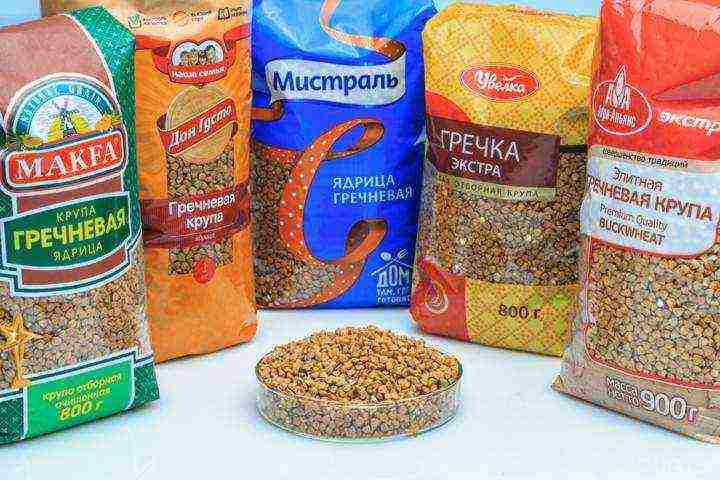
To find out the answer to this question, experts from the Roskontrol Consumer Union purchased five samples of buckwheat kernels from retail chains and handed them over to the laboratory: "Mistral", "Uvelka", Don Gusto, Makfa, Agro-Alliance... And what are the results of the study?
Pesticides: looking with a magnifying glass Long-lasting grits
Buckwheat belongs to those products that housewives buy, among other things, for long-term storage. We are accustomed to the fact that the main thing is to watch out for the absence of bugs in buckwheat, and do not think about possible limitations on the expiration date. Meanwhile, there are certain factors that affect how long you can keep cereals at home, and one of them is the mass fraction of moisture.
If there is a lot of moisture, buckwheat is not subject to long-term storage and should be eaten within a year from its production.
Made porridge 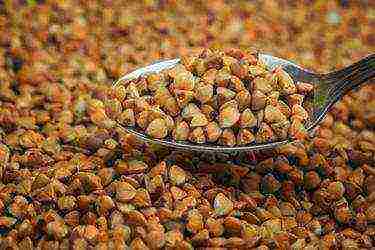
Buckwheat is a healthy nutritious product. Together with it, trace elements enter the human body - phosphorus, calcium, magnesium; iron, copper (thanks to this, buckwheat promotes hematopoiesis and the formation of hemoglobin, it is used to treat anemia). In general, sheer benefit. But buyers are often more concerned about the taste of the purchased products.
What breed is buckwheat? 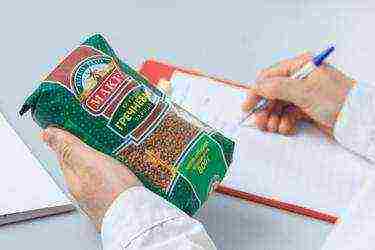
And what about the rest of the samples? On the packages it is indicated that the inside of the cereal is of the "highest" grade. And they all correspond to it.
The experts also assessed the presence of weeds. Weed seeds were found in three samples, but there are relatively few of them: Mistral only 0.02%, "Done Gusto" — 0,04%, "Agro-Alliance" - 0.06%. And in "Uvelke" not at all.
In buckwheatMakfa a trash admixture was found in the form of rye seeds, in a rather large amount - 0.16% (and trash admixture as a whole it contains most of all - 0.2%).
Svetlana Dimitrieva, Chief Expert, Roskontrol:
The amount of weed seeds is a sign of the culture of cereal production, as well as the presence of weed seeds can affect the taste properties of the finished product (give off tastes unusual for buckwheat, for example, bitter, rare, etc.).
Safety
Quality
Organoleptic characteristics (taste, smell, color ...)
| Buckwheat groats "Mistral", premium | ||||
| Buckwheat groats "Uvelka", premium | ||||
| Buckwheat groats "Don Gusto", premium | ||||
| Buckwheat groats MAKFA, premium | ||||
| Buckwheat "Agro-Alliance" |
Attention! The information provided in the article is current at the time of its publication. Re-screened product ratings are subject to change. You can find current ratings and product information in the Catalog.
